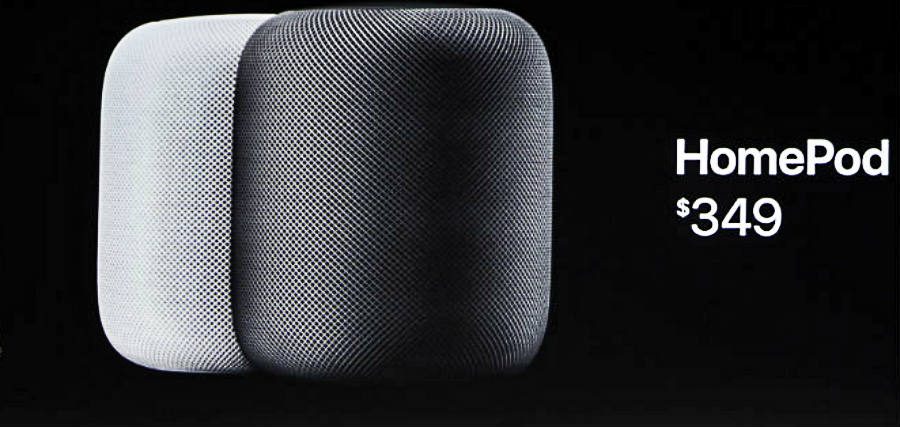On Monday, Apple introduced HomePod, its new smart speaker, at WWDC 2017. It features built-in Siri for voice assistance functions and Apple Music integration for access to more than 40 million songs in your living room. It costs $349, and it launches in December.
The annual event in San Jose, California, also featured the unveiling of next-generation iMac Pro and MacBook computers, including the introduction of the iMac Pro with Intel Xeon processors and AMD Radeon Pro Vega GPUs.
Apple seems to be aware that it is late to the smart speaker party, nearly two years after Amazon debuted the Echo and several months after the release of the Google Home. The HomePod might squeeze into the race by offering a unique approach to fans of the company.
Apple HomePod: Specs and features
The HomePod is a strange device. It is a minimalistic speaker covered by an all-around mesh and a smooth surface at the top that lights up when issuing commands to Siri. It comes only in Space Gray and White.
Apple opted for an A8 chip to give the speaker its smarts, the same processor that powered the iPhone 6. It has an array of six microphones, seven beam-forming tweeters, and an upward-facing woofer.
The sound technology on the HomePod supports echo cancellation to detect when users speak, room-sensing awareness to optimize audio output, and automatic detection of other speakers to balance sound and deliver the best experience possible.
Apple HomePod: Price and release date
Apple’s HomePod will be available for $349 this December in the United States, the United Kingdom, and Australia. Availability for the rest of the world is expected in 2018 at the same price point converted to local currency equivalents.
Is it worth it?
While many have been quick to bash the device for its uninspired design and lack of innovation, others suggest Apple is playing a different game here by offering the best of both worlds: ease of use and superb sound quality for music.
Those who think the speaker will succeed despite its high price tag claim that it will be adopted for the same reason Amazon’s Echo family now has control over 70% of the market: how easy it is to set up and use.
Apple’s HomePod just needs to be plugged into the wall and paired with mobile devices to start working. Siri also allows users to check on the weather, the news, and even control HomeKit-enabled devices like its competitors.
Detractors say the two home hubs can’t be compared because the Echo is intuitive to talk to and you can even customize how to address it, while the HomePod requires you to say “Hey, Siri,” every time you want it to do something.
In the end, the key difference is the music angle Apple is playing. Amazon’s Echo and Google Home don’t sound as good as the HomePod does, according to early reviews. That could be what drives demanding fans and consumers to choose Apple over rivals in the audio segment like Sonos.
Still, its capabilities to fill up a room with super high-quality music come at a higher price than most products in the market. In fact, it costs more than the $300 Sonos Play 3.
For now, it looks like Apple’s HomePod does not offer any breakthroughs in comparison to other devices, and the company hasn’t talked about support for other services besides Apple Music. That is expected to happen, though, and with AirPlay 2 coming soon, it might be even easier to link and sync speakers around the house.
Source: Apple



